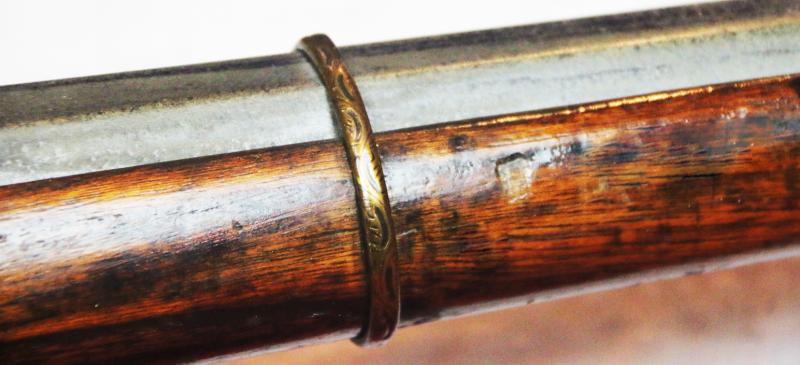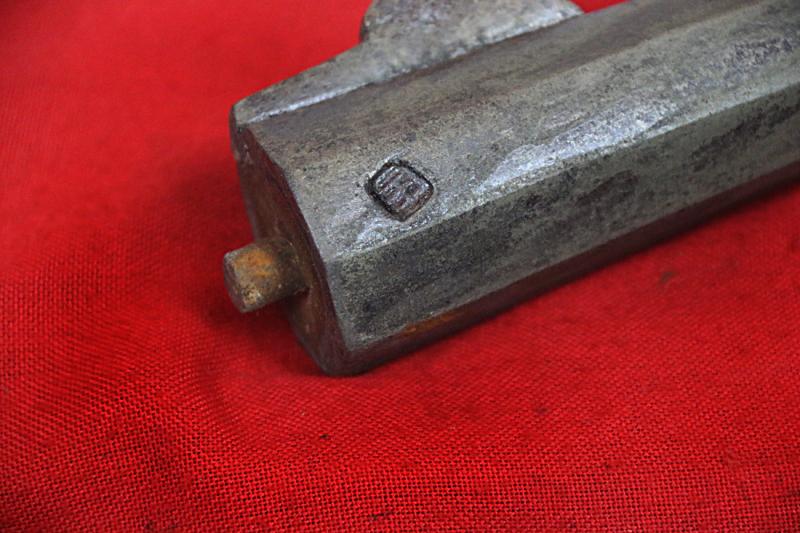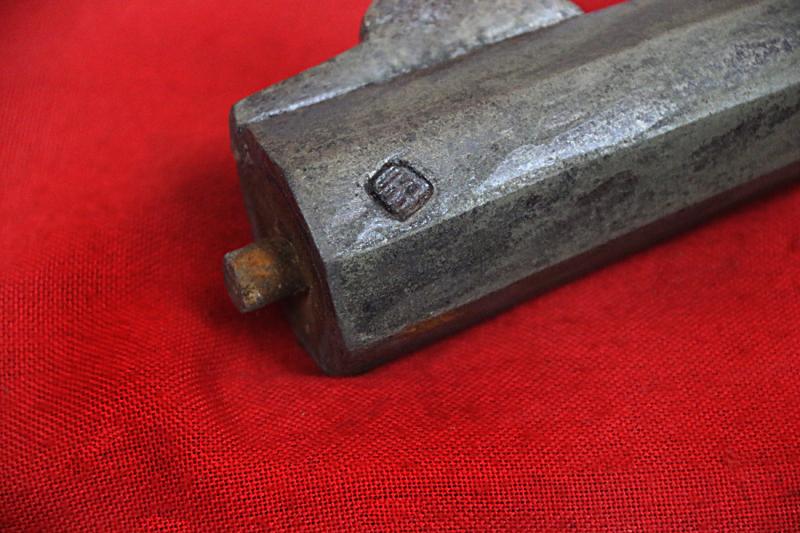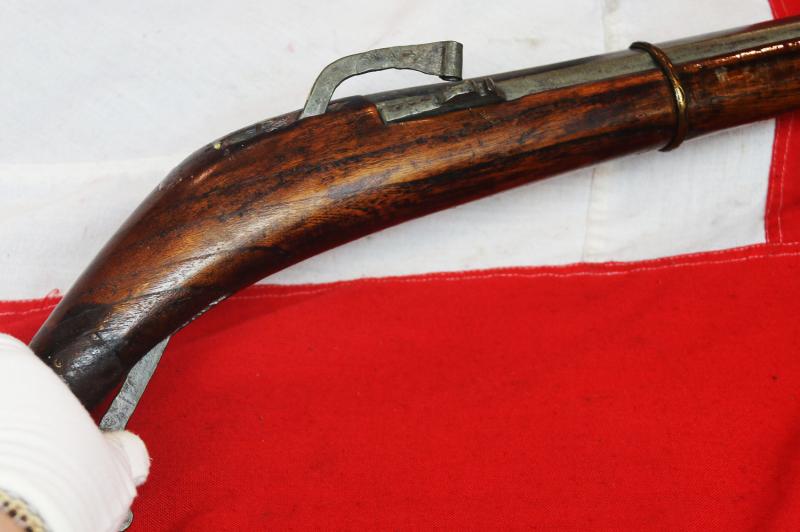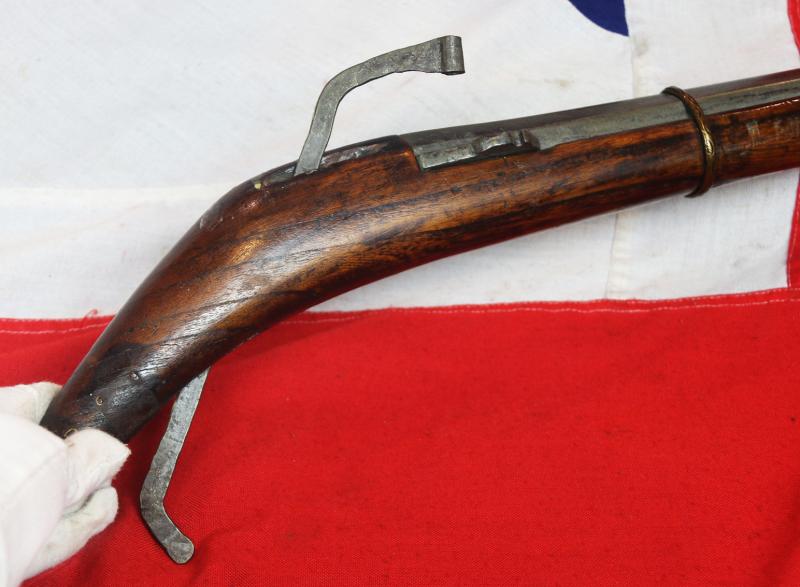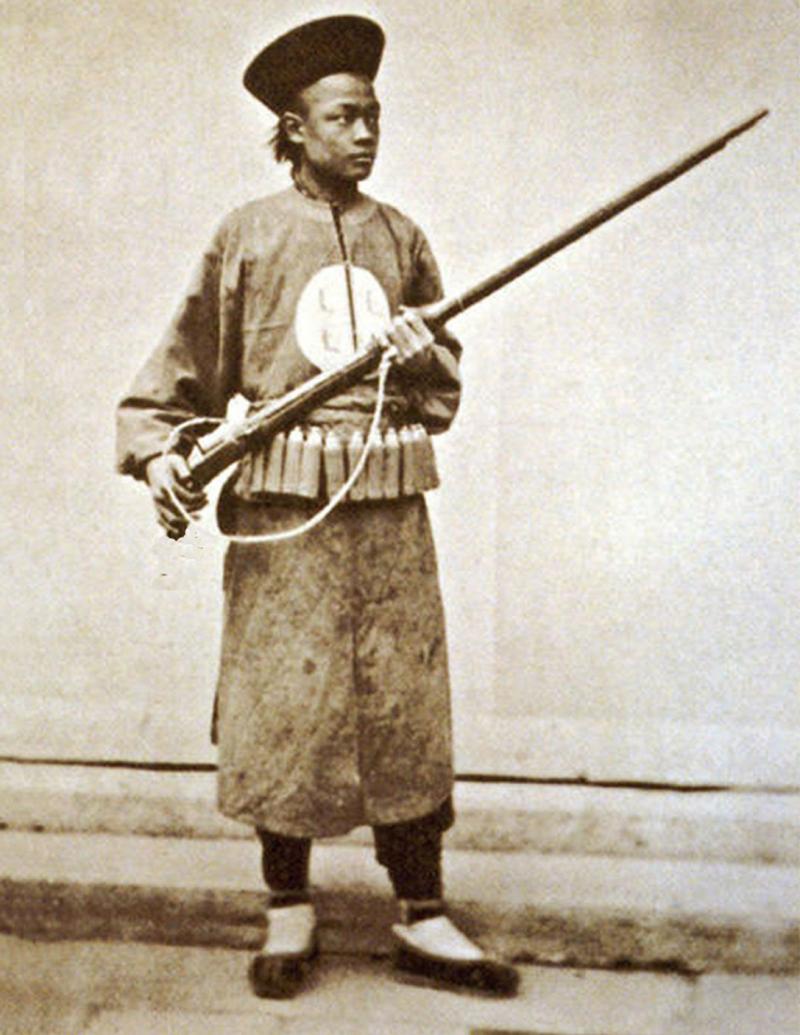A Very, Very Rare Ching {Qing} Dynasty Imperial Chinese Military Matchlock Musket Around 1750. The Long Octagonal Barrel Bears an Imperial Seal Stamp Beneath the Breech. Chinese Matchlocks Are Incredibly Rare To Find Especially in Europe
Although incredibly rare in Europe they are near non existent to find in China as almost every antique sword and arm {outside of museums} in China were destroyed in the Cultural Revolution between 1966 and 1976
Long fine stamped seal marked barrel, fine Chinese hardwood stock, with two engraved barrel bands. Iron matchlock ignition system. An arquebuss from China is very rare indeed in Europe as so few were brought back by the British and Europeans after the Opium War or the Siege of Peking period in the last Imperial Manchu era
Qianlong {aka Chien lung period}, used until the Boxer Rebellion. Most likely brought back to England by a British soldier that either served in the Opium War, or defended the legations at the siege in Peking.
China pioneered the use of gunpowder for fireworks and artillery in the thirteenth and fourteenth centuries. Sophisticated firearms technology, however, developed more rapidly in Europe during the fifteenth and sixteenth centuries and was then introduced into China by merchants, diplomats, and missionaries during the seventeenth century. Improved designs for cannons and practical types of hand-held guns were eagerly promoted and officially adopted as regulation military equipment under the Qing emperors Kangxi (reigned 1662–1722) and Qianlong (reigned 1736–1795). In addition to mastering the use of bow and arrow and other weapons, both Kangxi and Qianlong owned and used guns, particularly for hunting. This was in keeping with their overall belief in the importance of martial training, which they encouraged by personal example.
Thomas Child spent from 1870 to 1889 in Beijing, and John Thompson traveled in northern China from circa 1869 to 1872. By this time period, observers noticed that soldiers were often equipped with older, antique guns. I tend to date this type to circa 1720 to the 1750’s.
The Qing dynasty (English pronunciation; Ching), officially the Great Qing, was a Manchu-led imperial dynasty of China (1636–1912) and the last imperial dynasty in Chinese history.
It emerged from the Later Jin dynasty founded by the Jianzhou Jurchens, a Tungusic-speaking ethnic group who unified other Jurchen tribes to form a new "Manchu" ethnic identity. The dynasty was officially proclaimed in 1636 in Manchuria (modern-day Northeast China and Russian Manchuria). It seized control of Beijing in 1644, then later expanded its rule over the whole of China proper and Taiwan, and finally expanded into Inner Asia. The dynasty lasted until 1912 when it was overthrown in the Xinhai Revolution. In Chinese historiography, the Qing dynasty was preceded by the Ming dynasty and succeeded by the Republic of China. The multiethnic Qing dynasty lasted for almost three centuries and assembled the territorial base for modern China. It was the largest imperial dynasty in the history of China and in 1790 the fourth-largest empire in world history in terms of territorial size. With 419,264,000 citizens in 1907, it was the most populous country in the world at the time.
The height of Qing glory and power was reached in the reign of the Qianlong Emperor (1735–1796). He led Ten Great Campaigns that extended Qing control into Inner Asia and personally supervised Confucian cultural projects. After his death, the dynasty faced foreign intrusion, internal revolts, population growth, economic disruption, official corruption, and the reluctance of Confucian elites to change their mindsets. With peace and prosperity, the population rose to some 400 million, but taxes and government revenues were fixed at a low rate, soon leading to fiscal crisis. Following China's defeat in the Opium Wars, Western colonial powers forced the Qing government to sign "unequal treaties", granting them trading privileges, extraterritoriality and treaty ports under their control. The Taiping Rebellion (1850–1864) and the Dungan Revolt (1862–1877) in Central Asia led to the deaths of over 20 million people, from famine, disease, and war. The Tongzhi Restoration in the 1860s brought vigorous reforms and the introduction of foreign military technology in the Self-Strengthening Movement. Defeat in the First Sino-Japanese War in 1895 led to loss of suzerainty over Korea and cession of Taiwan to Japan. The ambitious Hundred Days' Reform of 1898 proposed fundamental change, but the Empress Dowager Cixi (1835–1908), who had been the dominant voice in the national government for more than three decades, turned it back in a coup.
Pictured in the gallery is a Ching soldier bearing the very similar musket, wearing a bandolier of powder charges around his waist. The long cord tied around his finger is the lit smouldering cord called the 'match' that attaches at the other end to the trigger lever.
72 inches overall long
Code: 25247
1995.00 GBP





